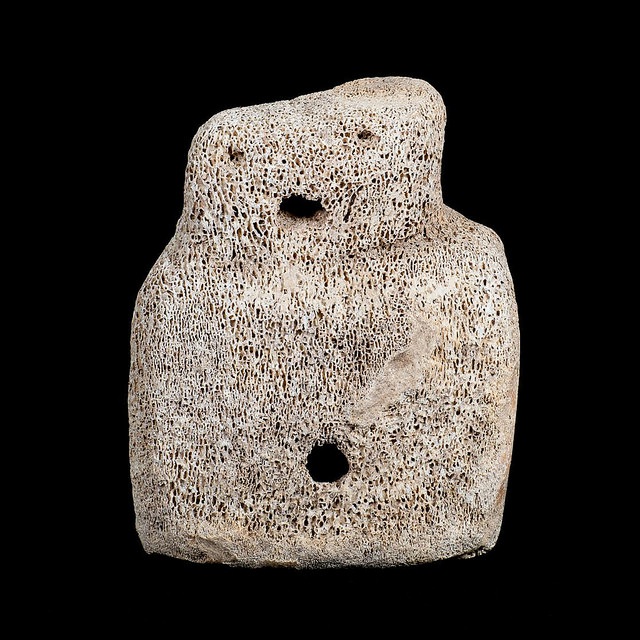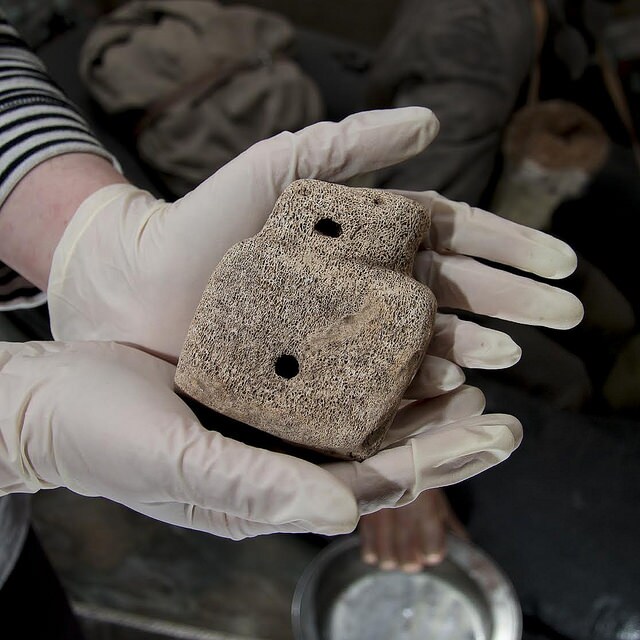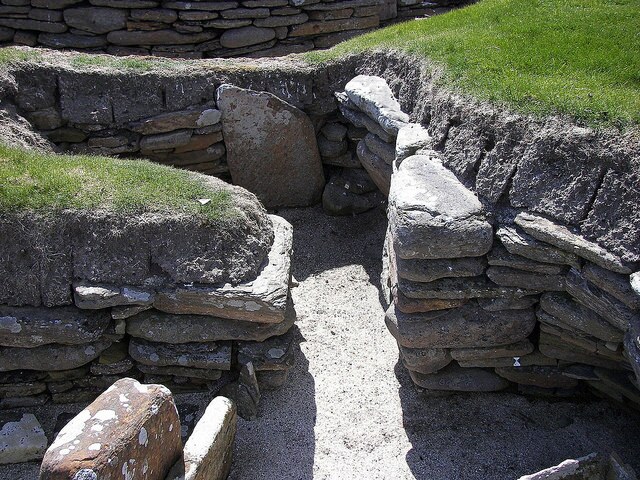
Stromness Museum, Orkney, Scotland—A long-lost Neolithic human figurine found at Skara Brae in the 1860s has been rediscovered in the collections of Stromness Museum, Orkney.
Dr David Clarke identified the figurine among artifacts from Skaill House donated to the museum without provenance in the 1930s, while undertaking research on Skara Brae funded by Historic Environment Scotland. David Clarke said:
“Amazingly, we found it in the last box of the day. I’ve always thought this figurine to be lost forever so seeing it staring back at me from its bed of tissue paper was completely unexpected and very exciting.”
Kathleen Ireland, Chair of Stromness Museum said:
“Stromness Museum has a superb collection of artifacts from Skara Brae, but this figurine has instantly become the new jewel in our collections. We are always pleased to welcome researchers and this rediscovery highlights what can found through painstaking research in museum stores.”
The representation has been carved from a piece of whalebone and measures 9.5cm high by 7.5cm wide. Eyes and a mouth have been cut in the face and the body has a navel, but is otherwise unadorned. Holes through the head and body may have been used to suspend the figurine.
___________________________________________
The Neolithic figurine carved from whalebone. Credit: Stromness Museum and Rebecca Marr
______________________________________________________
The Neolithic figurine held in the hands, for scale. Credit: Stromness Museum and Hugo Anderson-Whymark
___________________________________________________
The excavated remains of House 3, where the figurine was found. WKnight, Wikimedia Commons
_________________________________________________________
The figurine was originally discovered by William G. Watt, the local laird, when excavating a stone bed compartment in House 3 of the Neolithic village after a storm in 1850. Skara Brae is a stone-built late Neolithic (c.2900-2400 BC) settlement on the Bay of Skaill, Mainland, Orkney.
Watt’s find was briefly described as a ‘idol’ or ‘fetish’ in a report of discoveries at Skara Brae by the antiquarian George Petrie in 1867, but was otherwise only known by a sketch in Petrie’s notebooks, now held in the manuscripts of the Society of Antiquaries of Scotland.
Prehistoric representations of the human form are exceptionally rare in Britain. This figurine was the first Neolithic example discovered, but was largely forgotten. Hugh Morrison, Collections Manager for Historic Environment Scotland said:
“The rediscovery of the figure is significant as it emphasises many of the similarities in the late Neolithic assemblages and structures from Skara Brae and Links of Noltland. It’s also hugely exciting, because it opens the door for re-examining other objects in our collections and may shed light on other figurines found at HES commissioned excavations, such as the Westray Wife discovered at Links of Noltland.”
This understated but hugely important figurine, nicknamed the ‘Skara Brae Buddo’, is now being displayed for the first time in Stromness Museum alongside artifacts from Skara Brae that have not previously been displayed.
See the 3D interactive view of the figurine below.
Source: Adapted and edited from the subject press release of the Stromness Museum.
__________________________________________________
______________________________________________________

______________________________________________
Travel and learn with Far Horizons.
____________________________________________
This richly illustrated issue includes the following stories: Recent findings shedding new light on the whereabouts of the remains of Philip of Macedon, father of Alexander the Great; how an archaeologist-sculptor is bringing bones of the dead back to life; archaeologists uncovering town life at the dawn of civilization; an exclusive interview with internationally acclaimed archaeologist James M. Adovasio about what makes the Meadowcroft Rockshelter prominent in the ongoing search for the first Americans; what archaeologists are finding at the site of the ancient city of Gath, the home town of the biblical Philistine giant, Goliath; and how scientists are redrawing the picture of human evolution in Europe. Find it on Amazon.com.










